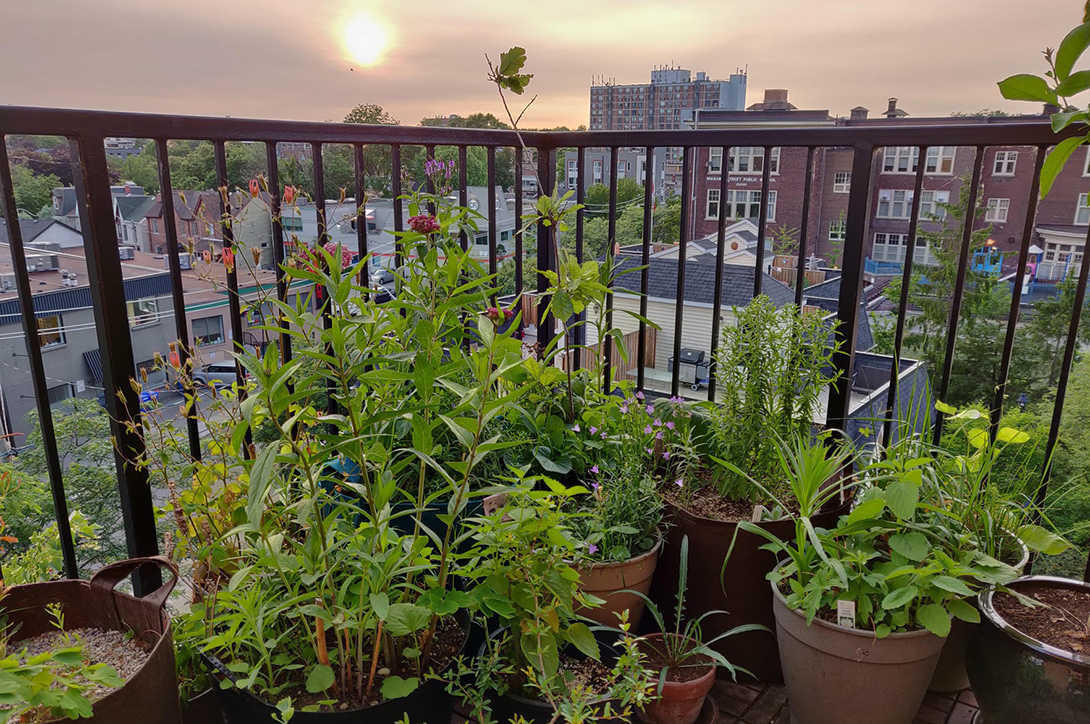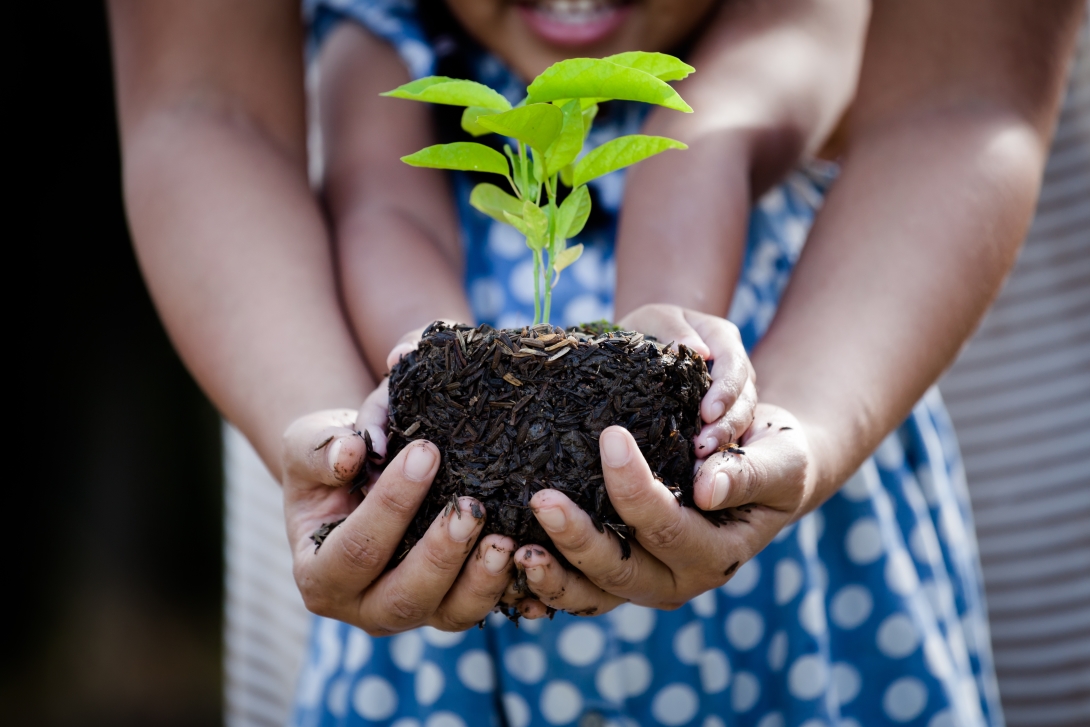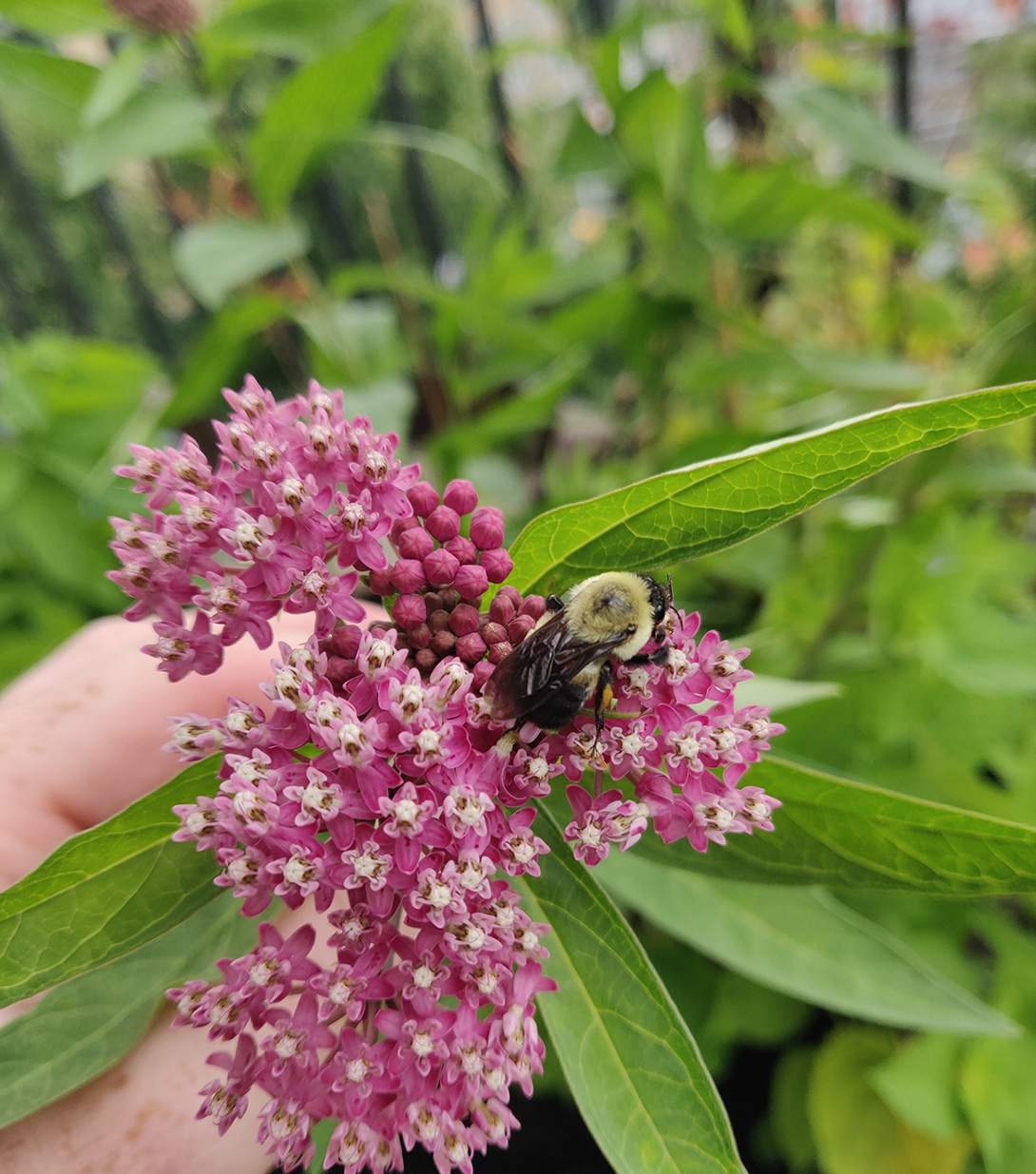How to create wildlife habitat on your balcony, patio or porch with container gardening
Want to support biodiversity but have no yard? No worries! You can still put your balcony and other smaller outdoor spaces to work by planting container gardens full of native plants.
This way, you’ll be helping restore degraded wildlife habitats from the ground up… even without the ground!

You can access resources to help you along the way by joining re:grow, our how-to hub for growing native plants. In addition to being hardy and beautiful, native plants provide food and shelter for bees, butterflies and moths, birds and other wildlife. (Be sure to have bird-friendly windows to prevent collisions during migration — guidelines can be found here.)
And by recording your actions on re:grow, you can help track our collective progress toward restoring nature, a step at a time.
Here are some container gardening tips to help you get started:

Get to know your space
Three important factors to consider for your container garden are:
- Light conditions — how much sun or shade your garden will receive during the day per season. This will inform your plant species choices.
- The amount of wind plants will be exposed to, which will also affect plant choice.
- Freezing — You’ll need to choose containers that can withstand freezing so they can stay outside year-round wherever you are in Canada
Prepare the container
There are so many plant pots and containers to choose from. To determine which one is right for your garden, choose pots that are as big as you can manage. We recommend a minimum of 35 centimetres wide and 35 centimetres deep. Make sure there’s adequate drainage so that plant roots don’t rot from sitting in too much water. Root pouches available from the WWF Store are one good container option.
Depth is also important so that you have room for potting soil or potting mix, solid fertilizer (like worm castings and fish emulsion, available at nurseries and garden centres) and, of course, the plants. You’ll want a durable container that can tolerate freezing and thawing through the winter months. The end goal is for plants to survive and thrive for longer than one planting season.

Pick your plants
For container gardens, plants with naturally shallow root structures are most suitable. For example, native plants that grow on shorelines are well adapted to rocky and windy conditions where there may not be much soil available.
The specific species you should grow depends on where you live. Look to nearby natural areas to get an idea of which plants will thrive in your local conditions. Here are examples of species from three regions that often grow well in containers:
Southern BC: coastal strawberry, western yarrow, sea thrift, pacific stonecrop.
Southern Ontario: sky blue aster, Canada wild rye, wild strawberry, nodding wild onion.
Southern Quebec: large-leaved aster, bottlebrush grass, wild columbine, woodland sunflower.
Choose plants that will flower at different times so that there will be a continuous food supply for visiting pollinators as well as beauty for you to enjoy.
The best plants for restoring habitat come from nurseries that specialize in native plants from local, ethical sources (i.e., ones that don’t harm wild plant populations). For more tips on finding plants native to your region and choosing a plant retailer, visit re:grow.
Watch this short video for planting techniques.
Experiment
Ryan Godfrey, WWF-Canada’s resident botanist, has tried a number of different plants on his sixth-floor condo balcony. He says that when designing your container garden, consider a variety of heights, bloom times, textures, greenery colours — and don’t forget aromas. You will enjoy your little garden as much as local pollinators!
Some of the plants Ryan describes as balcony superstars in the Toronto area are: wild columbine, Canada wild rye, common evening primrose and wild strawberry.

You can hear more about container gardening with native plants in this webinar Ryan presented for the North American Native Plant Society.
Experiment with different plant species in your own location to learn what thrives there and what doesn’t. Each space comes with its own specific set of growing conditions.
Start a trend and share your success stories
Start a native plant trend in your neighbourhood! Together we can build a pathway that pollinators can follow from one habitat to the next or an urban oasis where wildlife can access a rich supply of resources without leaving your block.
You can connect with other native plant gardeners in your area on re:grow. There, you can learn from others and share knowledge you’ve gained from experience. Take pictures of the process and the result, upload them and share to inspire fellow gardeners to take action for nature.
Thank you for helping spread the word about the importance of restoring native plants to urban environments.
You CAN be part of the movement to re:grow Canada — whether you have a little space or a lot.
Sign up today by creating your free account at re:grow. You’ll be able to track your progress and share in our collective impact for nature across the country. Your small space helps make a big difference.

